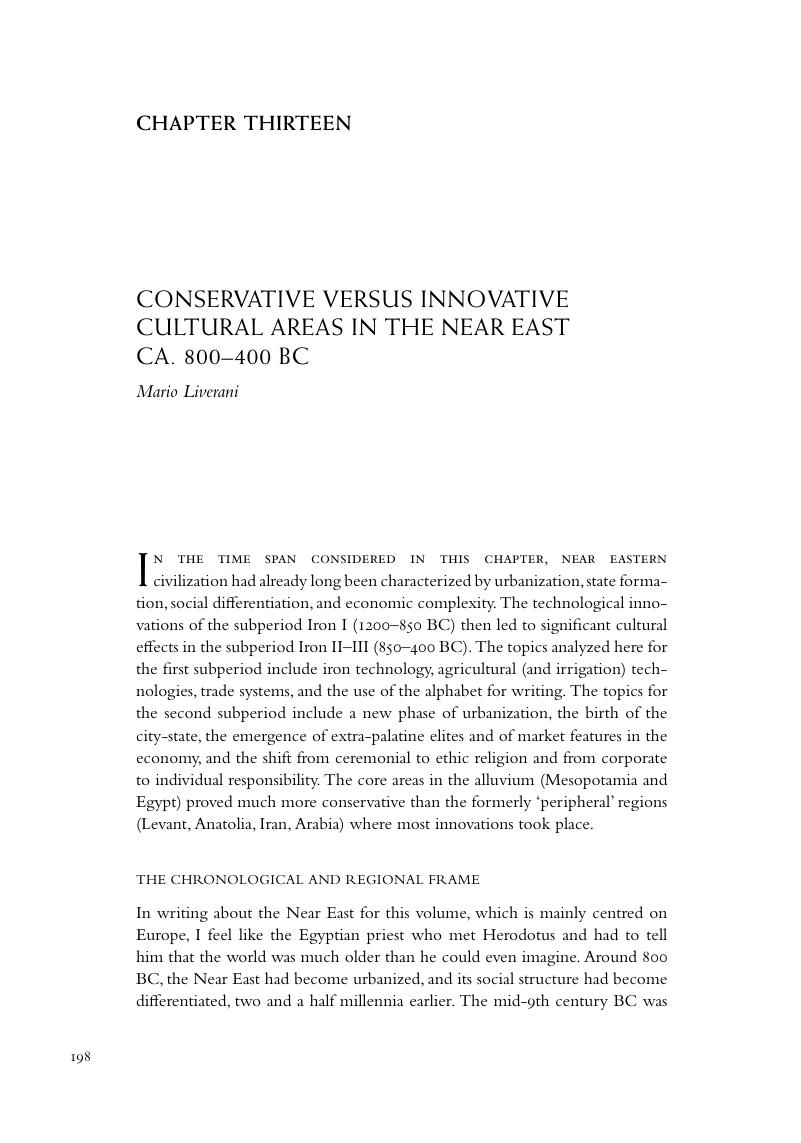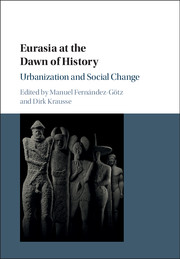Book contents
- Eurasia at the Dawn of History
- Eurasia at the Dawn of History
- Copyright page
- Contents
- Figures
- Tables
- Contributors
- Introduction
- Part I Between Myth and Logos
- Part II The Development of Social Differentiation
- Part III Approaching Social Complexity
- Part IV Urbanism through the Ages: Concepts, Models, and Definitions
- Part V Ancient Civilizations at the Turn of the Axis
- Chapter Twelve Egypt in the ‘Axial Age’
- Chapter Thirteen Conservative versus Innovative Cultural Areas in the Near East ca. 800–400 BC
- Chapter Fourteen Elite Burials in First-Millennium BC China: Towards Individualization
- Chapter Fifteen Giant Tumuli of the Iron Age: Tradition – Monumentality – Knowledge Transfer
- Part VI Times of Connectivity: The Mediterranean on the Move
- Part VII Early Urban Cultures from South to North
- Part VIII Changing Symbols, Changing Minds?
- Index
- References
Chapter Thirteen - Conservative versus Innovative Cultural Areas in the Near East ca. 800–400 BC
from Part V - Ancient Civilizations at the Turn of the Axis
Published online by Cambridge University Press: 28 March 2017
- Eurasia at the Dawn of History
- Eurasia at the Dawn of History
- Copyright page
- Contents
- Figures
- Tables
- Contributors
- Introduction
- Part I Between Myth and Logos
- Part II The Development of Social Differentiation
- Part III Approaching Social Complexity
- Part IV Urbanism through the Ages: Concepts, Models, and Definitions
- Part V Ancient Civilizations at the Turn of the Axis
- Chapter Twelve Egypt in the ‘Axial Age’
- Chapter Thirteen Conservative versus Innovative Cultural Areas in the Near East ca. 800–400 BC
- Chapter Fourteen Elite Burials in First-Millennium BC China: Towards Individualization
- Chapter Fifteen Giant Tumuli of the Iron Age: Tradition – Monumentality – Knowledge Transfer
- Part VI Times of Connectivity: The Mediterranean on the Move
- Part VII Early Urban Cultures from South to North
- Part VIII Changing Symbols, Changing Minds?
- Index
- References
Summary

- Type
- Chapter
- Information
- Eurasia at the Dawn of HistoryUrbanization and Social Change, pp. 198 - 210Publisher: Cambridge University PressPrint publication year: 2017

